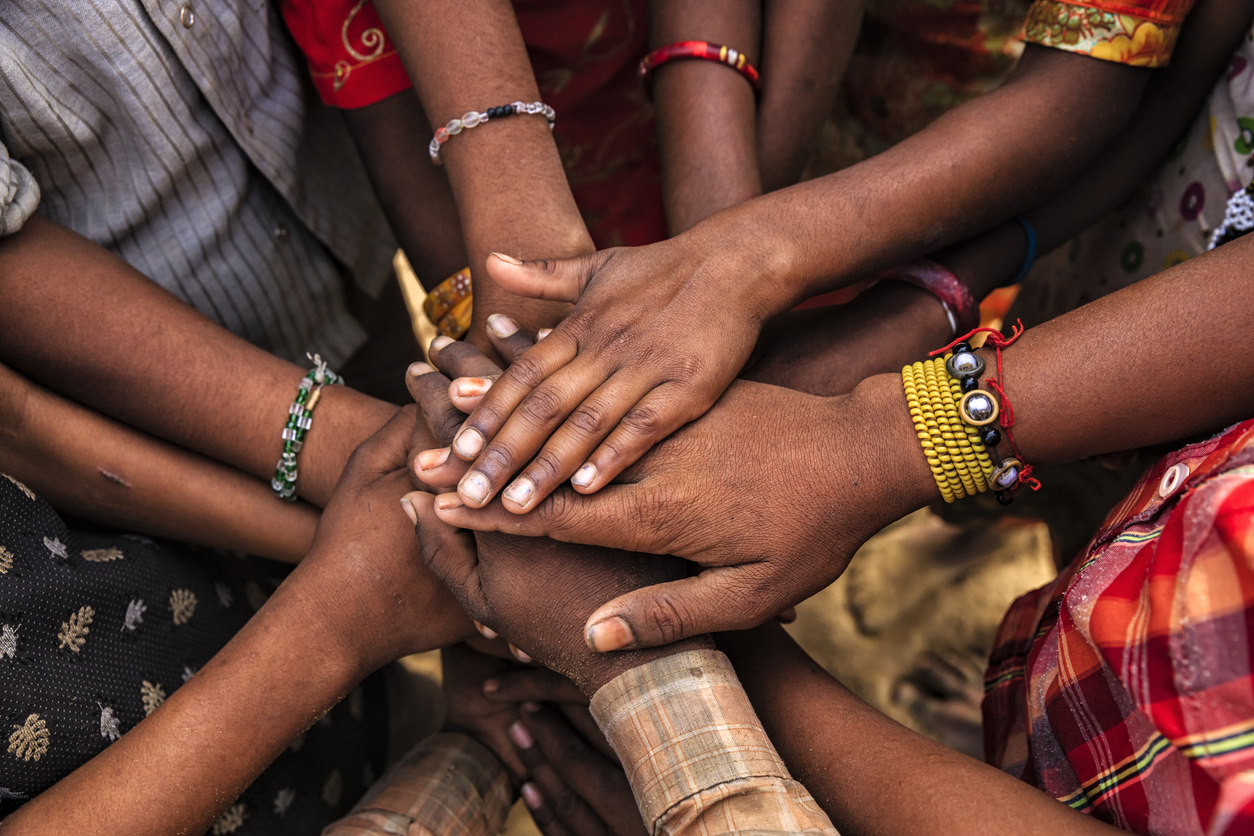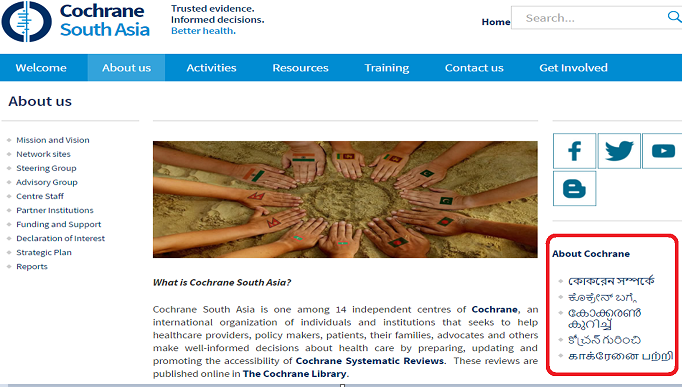
South Asia is home for over 1.6 billion people, speaking hundreds of languages among them. At least 12 of these languages are each spoken by 30 million or more people. All the countries in this region are categorized as either low or lower-middle income economies. Though English remains the official medium of instruction and communication among healthcare professionals in this region, large proportions of the general population do not speak or read English. Impactful dissemination of health information among the people in a language they understand is therefore a huge challenge.
As part of an initiative to reach out to people speaking native languages, Cochrane South Asia has created webpages explaining the role of Cochrane in six major South Asian languages - Bengali, Hindi, Kannada, Malayalam, Tamil, and Telugu targeting a potential reader base of over 700 million people.

These webpages in vernacular languages have been drafted with the aim of helping South Asian people understand, in their own social and linguistic contexts, the work of Cochrane and systematic reviews in improving healthcare. User-testing of the content in each language was done to try and avoid redundant literal translations of technical terms, with the emphasis placed on readability as much as on conveying the right information.
“The impact of Cochrane in the countries in South Asia will be enhanced if more people who do not read English in the region understand the importance of the rigorous, and independent, approach used by Cochrane. This is likely to improve their trust in Cochrane evidence, “ says Dr Prathap Tharyan, Director of Cochrane South Asia.
In due course, Cochrane South Asia hopes to work with the Central Executive Team and other stakeholders to start translating Cochrane evidence in regional South Asian languages to benefit larger sections of the population.

